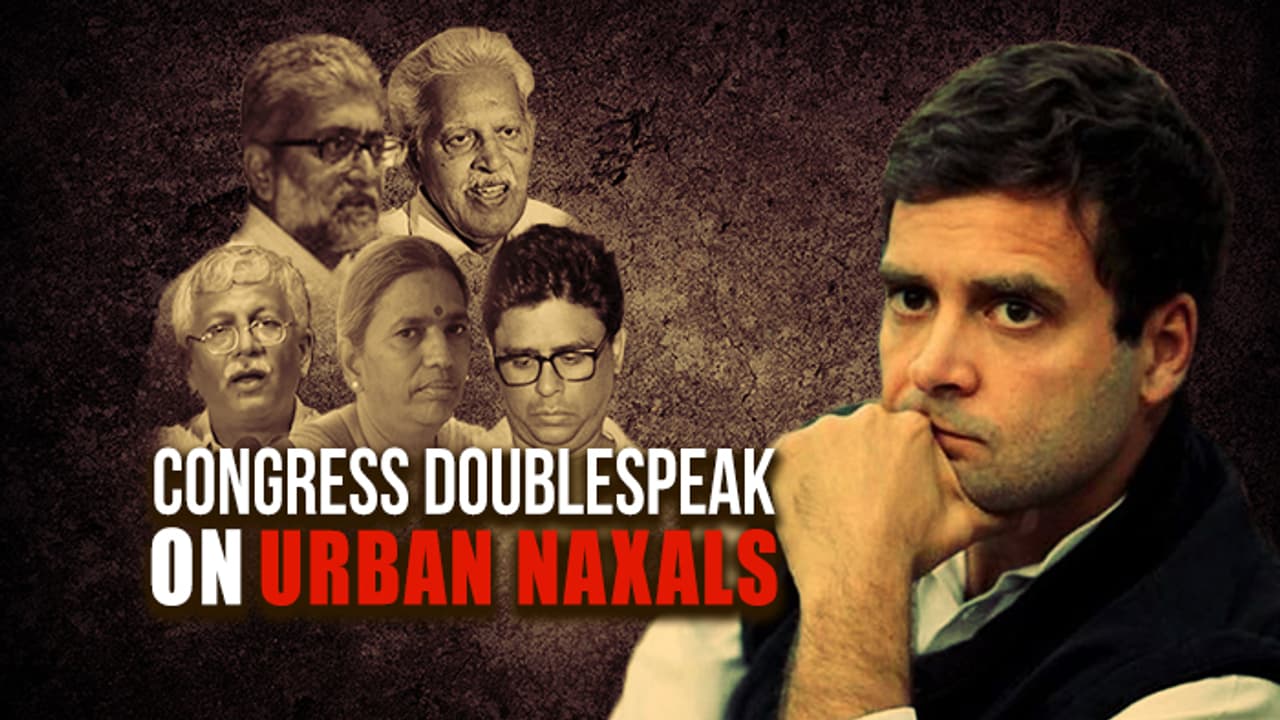'Left-Wing Extremism', as the Indian state defines Maoist terrorism, was described as the greatest internal security threat by then Prime Minister Manmohan Singh in 2009. But his party Congress's mouthpiece National Herald is singing a different tune now, sympathising with urban naxals.
New Delhi: An out-of-power Congress has emerged as the sheet-anchor of naxals, urban as well as underground. When in power, it was the Congress regime that had branded them as “serious internal security threat to the unity and integrity of India”.
As reported by The Times of India two days ago, the Manmohan Singh government had, in 2013, filed a counter-affidavit in the Kishore Samrite Vs Union of India and Others case saying a whole lot that painted the naxals as a big internal security threat.
But now, Congress mouthpiece National Herald has carried an opinion piece by Uttam Sengupta that argues that naxals are a “rag tag” and “motley” group and that the State was “paranoid” to chase them!
Then
In the affidavit posted by the ToI on its website, the UPA spread out the entire Maoist strategy to capture the State.
“It is pertinent to mention in this regard that the CPI (Maoist) Party professes a violent ideological line to overthrow the democratically elected parliamentary form of government in India through a combination of armed insurrection, mass mobilisation of certain sections of the society and tactical partnerships with other insurgent groups operating in different parts of the country,” the affidavit said.
Not only that, then Prime Minister Manmohan Singh had in October 2009 had branded naxalism as “the greatest internal security threat to our country” and said his government was taking adequate steps “to deal with the menace”.
Now
Talking about the current state offensive against naxals, the National Herald article draws a comparative picture of the strength and might of Indian forces and the 'meagre' resources of Maoists.
“…this massive force appears unable to deal with the Maoists. Well, that is not quite correct. The Union Home Ministry is on record saying that Maoist strength has gone down vastly and now only around 63 districts in the country are apparently affected by them, that a large number of Naxal or Maoist leaders have either surrendered or have been killed…Despite such overwhelming superiority and success, if the Indian State still continues to feel threatened by a rag-tag group, the paranoia needs to be questioned,” the article in the Congress mouthpiece reads.
Then
In the affidavit then UPA government had said: “The second strategy of the CPI (Maoist) is to mobilise certain targeted sections of the population, especially the irban population, through its ‘mass organisations’ which are otherwise known as ‘front organisations’. The ‘mass organisations’, mostly operating under the garb of Human Rights NGOs, are organically linked to the CPI (Maoist) Party structure but maintain separate identities in an attempt to avoid legal liability.
These ‘mass organisations’ are generally manned by ideologues, who include academicians and activists, fully committed to the party line. Such organisations ostensibly pursue rights related issues and are also adept at using the legal processes of the Indian State to undermine and emasculate enforcement action by the Security Forces…”
Now
The National Herald article blames the ill-conceived state policies and the 'greed of capitalists' for the rise and sustenance of naxalism.
“A popular conspiracy theory among them was that Maoists planned to carve out a Red Corridor starting from Nepal and cutting across Bihar, Bengal, Madhya Pradesh and Chhattisgarh and running through Maharashtra, Karnataka to the Kerala coast. Having seen the presentation, I can say that it looks very impressive and intimidating on the screen,” Sengupta writes.
Further, “Significantly, this is the corridor which hosts a large number of marginalised communities and adivasis, forests, rivers and mineral deposits. This is the corridor which industrial powerhouses would like to control. I suspect they are willing to pay a price but the price, instead of going to the local communities, is flowing to the bureaucrats, police and contractors-turned-politicians.”
Then
Again, the affidavit said, “…the third strategy of the CMI (Maoist) is to form a rainbow coalition of various insurgent groups in India so as to launch a ‘united front’ attack against the existing State machinery. It is submitted that the CPI (Maoist) Party believes that through this three pronged strategy they can seize polticial power in India and usher in a communist state and society.”
Now
But, the Congress mouthpiece now says: “Angry young men in rural areas do pick up guns, given an opportunity, partly because of rural joblessness and partly because they have given up on the Government and the political parties. As someone said, it is not poverty that prompts people to take up guns, but injustice. When political parties abdicate their responsibility and the bureaucracy is intent to serve itself, it is easy for the young to despair and look for easy solutions.
In my experience, they rarely take up arms to overthrow the Government. They do so in desperation, to ensure their own security, a modicum of dignity and self-respect and to get better food and clothing.”
